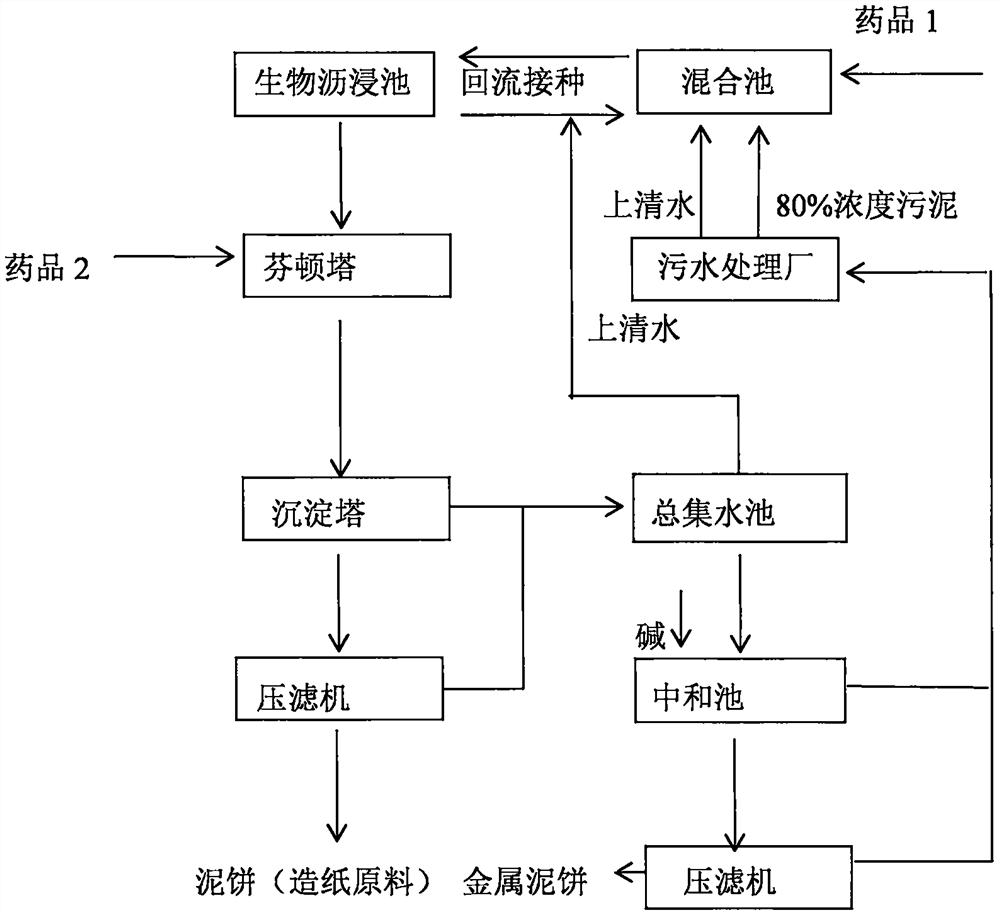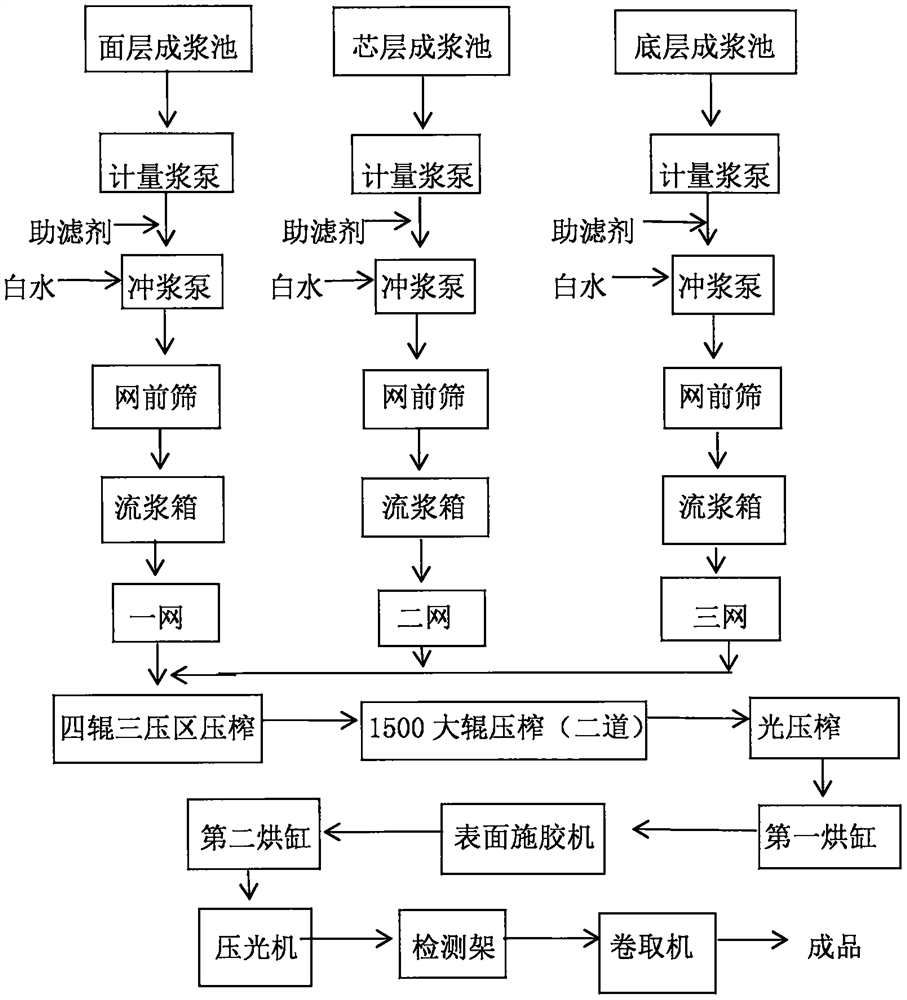Paper made of textile, industrial and agricultural waste residues and papermaking method
A paper and waste residue technology, applied in textiles and papermaking, chemical instruments and methods, paper, etc., can solve the problems of unreusable waste water, unacceptable production costs, and unpurification.
- Summary
- Abstract
- Description
- Claims
- Application Information
AI Technical Summary
Problems solved by technology
Method used
Image
Examples
Embodiment 1
[0096] The industrialized production method of waste fiber surface cleaning and hydrophilic finishing agent coating and finishing:
[0097] Self-made waste fiber surface modification production line, the production line is composed of carding machine, corona machine, padding machine, drying machine, PLC automatic control system is connected to form an automatic production line. The corona machine is modified by using a commercially available high-power corona cleaning machine. The selected corona cleaning machine has a three-phase power supply of 380v / 50kZ, an output power of 1kw-60kw, an output frequency of 3khZ-25kZ, and an output voltage of 0-20kv that can be continuously adjusted. The width is 0.5-3 meters, preferably 3 meters. Choose one or two double-sided corona discharge racks, preferably two sets. The electrodes are multi-needle (needle array) to large roller type (equivalent to plate type), and the electrode distance is 2-30mm. Preferably 10-20mm; carding machine, pa...
Embodiment 2
[0102] Surface grafting method for hydrophilic modification of waste fiber:
[0103] The surface grafting modification of the hydrophilic groups of synthetic fibers, the only water-based chemical methods that can be industrialized in China, such as alkali reduction or chromic acid oxidation followed by grafting acrylic monomers, but this method brings a lot of waste water pollution It is used in the field of waste fiber papermaking, and cannot afford the cost of wastewater treatment. However, the electromagnetic wave radiation and plasma treatment that have emerged in recent years cannot be applied to industrial production. The present invention has completed the experiment of using microwave plasma to directly graft organic graft gas on the fiber surface. This experiment is expected to be industrialized.
[0104] The microwave plasma treatment machine adopts WB240 microwave plasma cleaning machine of Yantai Godel Technology Co., Ltd., the frequency is 2.45GHZ, the power is co...
Embodiment 3
[0106] The third surface modification method of waste fiber: functional material modification of waste fiber surface:
[0107] Use silane coupling agent KH-570 to make functional coating of waste fibers, and then use hydrophilic finishing agent to make hydrophilic fibers, which are used as papermaking materials.
[0108] Raw material preparation: ①Waste fiber raw material: preferably synthetic fiber or inorganic fiber, also can use their mixture. ② Preparation of silane coupling agent KH570 finishing solution: ethanol / water = 1 / 9, add acid to adjust the pH value to 4, add appropriate amount of EDTA to make silane coupling agent KH-570 hydrolyzate, add silane coupling agent KH under stirring -570, to achieve a concentration of 0.1-5%, preferably 0.5-2%, in KH-570, you can also add non-ionic surfactant OP10 accounting for 0.1% of the total amount, mix well and put them into the hydrolyzate together, stir and hydrolyze 1H spare. ③Preparation of hydrophilic finishing agent: Sodi...
PUM
| Property | Measurement | Unit |
|---|---|---|
| angle | aaaaa | aaaaa |
| separation | aaaaa | aaaaa |
Abstract
Description
Claims
Application Information
 Login to View More
Login to View More - R&D
- Intellectual Property
- Life Sciences
- Materials
- Tech Scout
- Unparalleled Data Quality
- Higher Quality Content
- 60% Fewer Hallucinations
Browse by: Latest US Patents, China's latest patents, Technical Efficacy Thesaurus, Application Domain, Technology Topic, Popular Technical Reports.
© 2025 PatSnap. All rights reserved.Legal|Privacy policy|Modern Slavery Act Transparency Statement|Sitemap|About US| Contact US: help@patsnap.com


